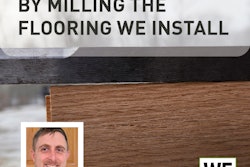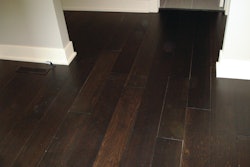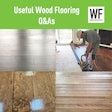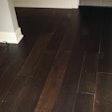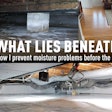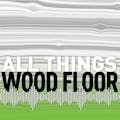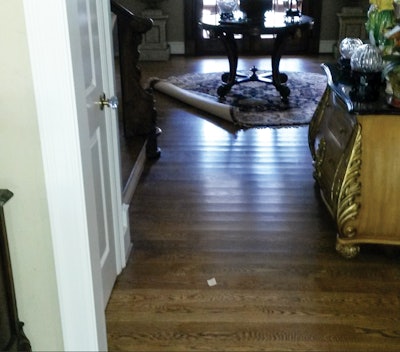
The Problem
I was called to inspect a plank floor in a home in the South due to cupping.
What Happened
After a plumbing leak in September, the existing wood floor cupped and was replaced the following February. The replacement flooring covered rooms throughout the first level. By early summer, the homeowners noticed the replacement flooring, a 5-inch-wide solid oak product, had begun cupping.
The Inspection
When I arrived more than a year after the cupping was first noted, the cupping was noticeable from a standing position throughout the installation. In all rooms the flooring varied from slightly cupped to mostly flat. Six of 11 sampled areas showed average cupping of more than 0.01 inch.
Moisture readings of the flooring with a pin meter showed an average of 7.75% MC at the surface and 8.25% MC near the board center, while the plywood subfloor measured 14.5–17.5% MC. Moisture readings of the joists and subflooring in the crawl space were 16.5–17.5% MC. The home's interior measured from 50–52% RH and 73–75 degrees Fahrenheit; the crawl space was at 75 degrees Fahrenheit but a RH of 74%.
Differential moisture readings of as much as 8% MC through the flooring to the subflooring showed a site-related condition affecting the flooring from below and causing the cupping. The long-term cupping without significant change was related to the overall flooring environmental moisture condition. Because there was not excessive moisture in the flooring, this is generally considered a "permanent cupping condition" as long as the environmental conditions do not change significantly.
How to Fix the Floor
Typical options for a cupped floor are:
1) No action (for minor seasonal cupping).
2) Sanding the flooring (for permanent noticeable cupping). Ideally this should be done during transition seasons, i.e., October or May.
3) For cupped areas with an extra moisture source, the source should be eliminated and the floor allowed to dry to "normal" conditions before determining remediation.
In this case, I suggested No. 2 or No. 3. No. 2 is a viable option since the cupping is considered permanent, while the No. 3 option would require removing extra crawl space moisture.
In the Future
For the flooring to have dimensional stability, wood flooring and subflooring should have a differential of 4% MC or less (some manufacturers require 2% for plank).















